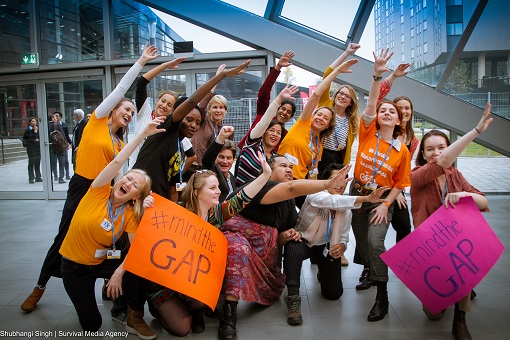
Mind the "GAP"! The programme for gender participation in climate policies
At the Conferences of the Parties (COP) for negotiations on climate policy for just under a decade various interest groups - referred to as 'Constituencies' - have existed and operate within the sphere of the United Nations Framework Convention on Climate Change (UNFCCC) to promote policies and projects relevant to their values and ideas.
These bodies include the Women and Gender Constituency, a particular interest group that promotes the inclusion of rights and interests of women and other gender groups within the sphere of climate and environmental issues. This Constituency, which began in 2009 with the participation of a small number of individuals and organisations, has become an increasingly important actor within the UNFCCC. It is also thanks to the work of this group if in 2015 civil society was able to voice its opinions in negotiations and succeeded in having principles relating to human rights included in the text of the Paris Agreement.
In this last week of negotiations, the Constituency achieved another important goal: the approval of the Gender Action Plan (GAP), a permanent programme aimed at ensuring an equal form of representation for women and men within the UNFCCC. In order to guarantee the same access opportunities to national delegations participating in the negotiations, the GAP will endeavour to raise awareness with regard to climate change and the mechanism of political participation with respect to both men and women. It will also continue to pursue its action to promote political pressure within the UNFCCC so that climate policies and financial programs are rendered more effective through the integration of gender perspectives.
The text of the programme is the result of intense work among the members of the Women and Gender Constituency, and despite the fact its approval may be considered as a positive example of democratic participation, a few issues still remain.
The document primarily refers to women as 'victims' of climate change, while their presentation as agents of change with entrepreneurial, scientific and political skills remains insufficient.
In addition, the text has been heavily reduced and the initial request for an explicit mention of the rights of indigenous women and human rights defenders within the framework of climate issues were not included in the final version.
The representative of the Kichwa indigenous population of Ecuador, Lina Gualinga, expressed her frustration on the day the GAP was approved, declaring that "the representation of female environmentalists and climate defenders is minimal at the COP conferences and the language of the negotiations has been elaborated and formulated, leaving no space to address our concerns."
Mary Robinson, President of the Mary Robinson Foundation and one of the political actors who has made the greatest efforts to ensure the Action Plan would be approved, also expressed her regret: "I would have expected a clear recognition of the importance of the needs, participation and traditional knowledge of indigenous and local women. We have worked hard to have these aspects included in the action plan. This did happen, but not to the extent we had hoped for. She went on to state that in any case adoption of the GAP may be definitely seen as "an important step forward."
The GAP nonetheless remains an instrument that will help to render operative and more substantial those principles already transversely present in the work of the UNFCCC. It is no surprise, therefore, that the text is not so innovative, but in any case, it remains an important achievement for the participation of women and other gender groups in the political arena of climate negotiations. So … mind the GAP! The process of change will not be stopped!
Chiara Soletti
Published for Italian Climate Network on Gli Stati Generali.
